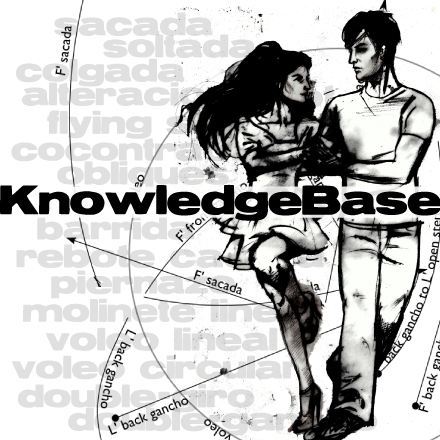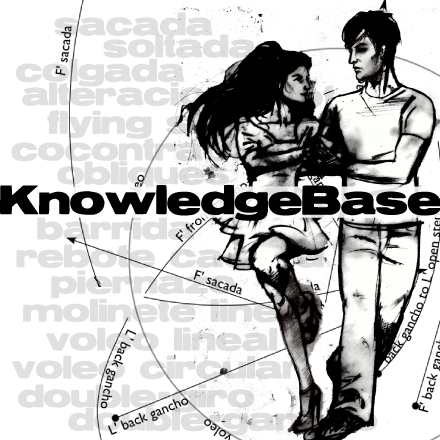
In colgada, the partners lean away from one another.
This is an intensification of the arch of connection, with a wider base, forcing the partners to rely on the arch for balance.
Permission
The distinct aspect of the mark for this movement is communicating the permission to lean. This is a change of embrace.
The change is extension of the elbow joints, less than 2cm. Once the Revel has begun to lean, both partners must immediately initiate co-contraction in the upper arms (biceps+triceps) to support the position. External rotation of the shoulder joints must also be fortified.
(If the mark makes the mistake of pushing on the revel with his hands or pushing her too far, he will send her upper body too far into the lean, making her heavy and hard to control. For now, just give the permission.)
Structure and Size
Once the permission has been communicated, and the embrace adjusted, the Mark can now fulfil the colgada. To do this, he increases hip flexion (by pulling his tailbone back while keeping his torso close to upright) while extending his shoulder joints (maintaining external rotation!). He may extend his knees or flex them. He may also extend his elbow joints further.
The Revel’s hips and shoulders and base leg’s knee will match his exactly.
Both partners intensify the co-contraction in their upper legs (quadriceps+hamstrings) to support the intensified arch.
The structure of the bodies must sustain the arch throughout the movement, keeping the two arcs aligned on one vector. If the arcs mis-align, the partners will not be able to balance one another, and they will fall.
The solution to hip stabilization (and, thereby, lightness) in any off-balance position is to contract the piriformis. This prevents weight dropping into the hip joint (and thereby onto the partner) by ensuring that the leg and abdominal muscles are supporting that weight.
Further, contraction of the piriformis triggers the stabilization chain which allows us to control and adjust the position of the hip while it’s overburdened, which otherwise can be difficult.
The weight and drama of the movement correlate to the size of the Mark’s hip and knee flexion + shoulder and elbow extension.
The Mark should not try to hold on to the Revel! She holds herself, with both hands at first. If the arch is perfectly aligned the partners may feel comfortable dropping one side of the embrace.
Ending
To end the colgada, he should not pull on the revel, as this will destabilize the arch, but just stand upright, releasing the hip flexion and returning his shoulders to a normal angle.
Colgadas end nicely with Revel’s sacadas or by transition to volcada.
Advanced colgada exits are gradual, the mark should transfer weight to one foot without doing anything to the revel. Then flex and use intense co-contraction to increase the power in your base leg. Project her free leg in the direction you want her to step. Then use the extension of the base to support her transfer of weight, progressively bringing her back to balance during the transfer of weight so that she doesn’t arrive fully upright until the end of the step. Do not pull on the revel with your arms or her exit will be jerky or clunky.
Projection & Variations
If the Mark uses a vertical circle to initiate the colgada, the Revel’s leg will go up into linear voleo before the permission and then maintain that position during the colgaga.
If the Mark gives the permission during the Revel’s front projection, her leg may stay there during the colgada (rare, but possible).
If she feels no projection, the default is to allow her free leg to fall into projection, following gravity. Here are the most common positions:



If the Revel is in a cross or standing on both feet at the moment of the permission, she can keep her feet there during the colgada.
Turning colgadas are lovely. Check out this beloved video demo by Luis Bianchi and Daniella Pucci. But do not try to turn the colgada until you can do really great static ones. make sure you can reliably establish static colgadas, finding a perfect perpendicular vector between the revel’s direction of hang and the mark’s ass. To learn the science of turning, see the entry on leaning.











